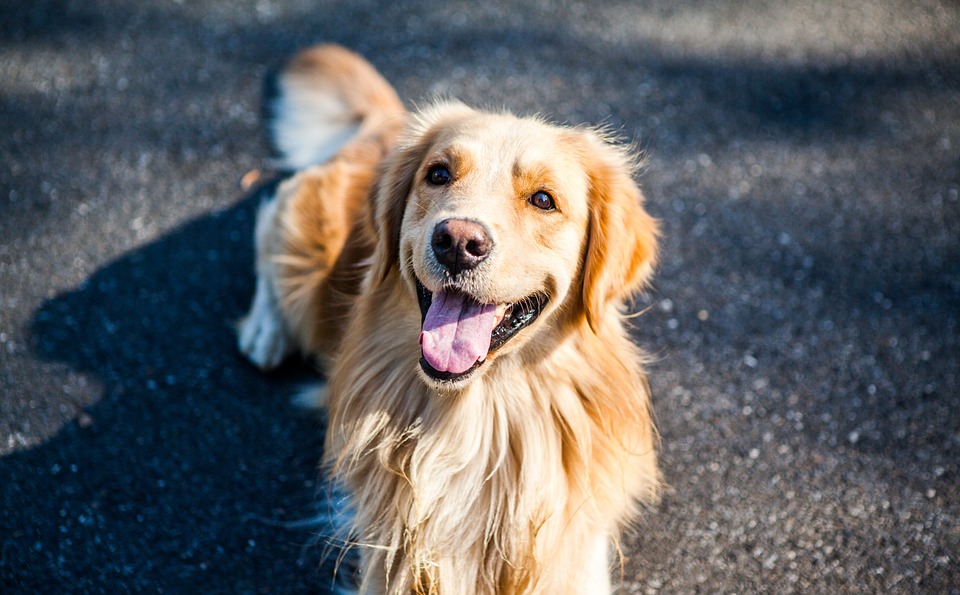Dog Lifespan: Average Lifespans, Breed Comparisons, and Factors Affecting Longevity
This article delves into the fascinating world of canine longevity, exploring the average lifespans of dogs, comparing the life expectancies of different breeds, and examining the numerous factors that influence how long our furry companions live. We will cover topics such as genetics, nutrition, lifestyle, and healthcare, providing valuable insights for dog owners to understand and potentially extend their beloved pets' lives.
Part 1: Understanding Canine Lifespans

1.1. The Average Lifespan of Dogs
- The average lifespan of a dog is generally between 10 and 13 years, with some breeds living significantly longer or shorter.
- The lifespan of a dog is influenced by a variety of factors, including breed, genetics, environment, lifestyle, and healthcare practices.
- Understanding the factors that influence lifespan can help dog owners make informed decisions about their pet's health and well-being.
1.2. Breed Differences in Lifespan
- Dog breeds have varying life expectancies due to their genetic predispositions and inherent characteristics.
- Smaller breeds tend to have longer lifespans than larger breeds, as they are less prone to certain health problems associated with size.
- For example, Chihuahuas and Yorkshire Terriers can live up to 15-20 years, while Great Danes and Saint Bernards may only live for 8-10 years.
- These differences in lifespan are also influenced by the specific breed's susceptibility to certain diseases or health conditions.
Part 2: Factors Influencing Canine Longevity

2.1. Genetics and Breed Predisposition
- Genetics play a crucial role in determining a dog's lifespan, as they are responsible for their inherited traits and predispositions.
- Certain breeds are predisposed to specific health conditions that can affect their longevity.
- For example, German Shepherds are prone to hip dysplasia, while Bulldogs are susceptible to respiratory problems. These conditions can significantly impact a dog's quality of life and lifespan.
- Responsible breeding practices, such as genetic testing and screening, can help minimise the risk of hereditary diseases and increase a dog's lifespan.
- By choosing a breeder who prioritises health and genetic testing, owners can significantly increase the chances of their dog having a long and healthy life.
2.2. Nutrition and Diet
- A balanced and nutritious diet is essential for a dog's overall health and longevity, providing the necessary nutrients for growth, development, and maintenance.
- High-quality dog food formulated for their age, breed, and activity level provides essential nutrients, including proteins, fats, carbohydrates, vitamins, and minerals.
- Overfeeding and feeding unhealthy snacks can lead to obesity, which can put a strain on a dog's organs, increasing their risk of developing heart disease, diabetes, and joint problems, ultimately shortening their lifespan.
- Consult with a veterinarian to determine the appropriate diet for your dog, taking into account their individual needs and activity level.
2.3. Lifestyle and Exercise
- Regular exercise is crucial for maintaining a dog's physical and mental well-being, preventing obesity and promoting muscle health.
- Adequate exercise helps strengthen the cardiovascular system, improving circulation and reducing the risk of heart disease.
- The amount of exercise needed varies depending on the breed, age, and health condition of the dog.
- A sedentary lifestyle can lead to health problems, such as joint pain, muscle weakness, and obesity, which can negatively impact lifespan.
- Ensure your dog receives a minimum of 30 minutes of exercise daily, including walks, runs, or playtime, to maintain a healthy weight and improve their overall health.
2.4. Healthcare and Preventative Measures
- Regular veterinary check-ups, vaccinations, and preventative measures are essential for early detection and treatment of health issues.
- Routine parasite control, including heartworm prevention, flea and tick control, can help protect your dog from potentially fatal diseases.
- Dental care, including brushing and professional cleanings, can prevent dental disease, which can impact overall health and lifespan.
- Spaying or neutering can reduce the risk of certain cancers and other health problems, potentially extending a dog's lifespan.
- Early diagnosis and intervention for health problems can often prevent serious complications and prolong a dog's life.
2.5. Environmental Factors
- The environment in which a dog lives can also affect their lifespan. Exposure to toxins, pollutants, and extreme weather conditions can pose health risks.
- Providing a safe, clean, and comfortable living environment, including adequate shelter and a clean water source, can promote well-being and longevity.
- Protect your dog from potential hazards like pesticides, cleaning products, and poisonous plants. Be mindful of extreme temperatures, providing shade or shelter when needed.
Part 3: Breed-Specific Lifespan Comparisons

This section provides a general overview of average lifespans for different dog breeds, grouped by size categories. Keep in mind that these are just averages, and individual lifespans can vary greatly.
3.1. Small Breeds
- Chihuahua: 15-20 years
- Yorkshire Terrier: 14-16 years
- Pomeranian: 12-16 years
- Maltese: 12-15 years
- Cavalier King Charles Spaniel: 9-14 years
3.2. Medium Breeds
- Beagle: 10-15 years
- Cocker Spaniel: 12-14 years
- Golden Retriever: 10-12 years
- Labrador Retriever: 10-12 years
- Border Collie: 10-14 years
3.3. Large Breeds
- German Shepherd: 7-10 years
- Golden Retriever: 10-12 years
- Labrador Retriever: 10-12 years
- Rottweiler: 8-10 years
- Great Dane: 6-8 years
3.4. Giant Breeds
- Mastiff: 6-10 years
- Saint Bernard: 8-10 years
- Newfoundland: 8-10 years
- Irish Wolfhound: 6-10 years
- English Bulldog: 8-10 years
Part 4: Extending Your Dog's Lifespan
4.1. Preventative Healthcare
- Regular veterinary check-ups and vaccinations are crucial for early detection and prevention of health problems.
- Dental care, including brushing and professional cleanings, is essential for preventing dental disease, which can lead to infections and other health issues.
- Parasite control, including heartworm prevention, flea and tick control, is essential for protecting your dog from potentially fatal diseases.
- Spaying or neutering can reduce the risk of certain cancers and other health problems, potentially extending a dog's lifespan.
4.2. Balanced Diet and Exercise
- Feed a high-quality diet formulated for their age, breed, and activity level, ensuring they receive the necessary nutrients for optimal health.
- Avoid overfeeding and unhealthy snacks, as they can contribute to obesity and related health problems.
- Provide regular exercise tailored to their breed and fitness level, promoting muscle health, cardiovascular fitness, and a healthy weight.
- Encourage mental stimulation through training, puzzle toys, and interactive games, providing mental enrichment and reducing boredom, which can lead to destructive behaviours.
4.3. Stress Management
- Provide a safe and comfortable environment, free from potential hazards and stressors, including excessive noise and unfamiliar people or animals.
- Minimise exposure to stress and anxiety triggers, such as loud noises, sudden changes in routine, and aggressive interactions with other animals.
- Socialise your dog appropriately, exposing them to different environments, people, and animals in a controlled and positive manner, promoting confidence and reducing anxiety.
- Offer plenty of cuddles and affection, providing emotional support and reducing stress levels.
Part 5: FAQs
5.1. What is the longest a dog can live?
- The longest recorded lifespan for a dog was 29 years for an Australian Cattle Dog named Bluey.
- However, most dogs typically live for 10-15 years, with smaller breeds often having longer lifespans than larger breeds.
5.2. Can I do anything to help my dog live longer?
- Yes, there are several things you can do to promote your dog's longevity.
- Providing a balanced diet, regular exercise, preventative healthcare, and a stress-free environment can all significantly impact their lifespan.
5.3. Why do some dog breeds have shorter lifespans than others?
- Breed differences in lifespan are often attributed to genetic predispositions to certain health conditions.
- Larger breeds are more prone to joint problems, cancer, and other health issues that can shorten their lifespans.
- Spaying or neutering can reduce the risk of certain cancers, such as mammary and uterine cancers in females and testicular cancer in males.
- This can contribute to a longer lifespan, but it is not a guarantee. It's important to consult with a veterinarian about the potential benefits and risks of spaying or neutering for your specific dog.
- Signs of aging in dogs can include: decreased activity levels, changes in sleep patterns, weight loss or gain, decreased muscle mass, cognitive decline, graying of the muzzle, and changes in coat texture.
- If you notice any changes in your dog's behaviour or health, it is important to consult with your veterinarian.
- Yes, a dog's lifestyle can significantly impact its lifespan.
- Regular exercise, a balanced diet, and a stress-free environment can all contribute to a longer and healthier life for your canine companion.
5.4. Is it true that spaying or neutering a dog can extend their lifespan?
5.5. What are some signs of aging in dogs?
5.6. Can a dog's lifestyle affect its lifespan?
Everyone is watching
-

Can Dogs Eat Bananas? A Guide to Safe Treats
DOGS & PUPPIESThis comprehensive guide will delve into the world of canine nutrition, focusing on the popular question: can ...
-

Can Dogs Eat Oranges? (Is It Safe or Toxic?)
DOGS & PUPPIESThis article delves into the question of whether dogs can safely consume oranges. We'll explore the nutrition...
-

Can Dogs Eat Grapes? The Shocking Truth About This Fruit
DOGS & PUPPIESThis article delves into the controversial topic of grapes and dogs, exploring the potential dangers associate...
-

Why Do Dogs Eat Poop? Understanding Coprophagia in Dogs
DOGS & PUPPIESThis article delves into the perplexing phenomenon of coprophagia, the act of eating faeces, in dogs. We explo...
-

Can Dogs Eat Shrimp? A Guide to Safety and Risks
DOGS & PUPPIESThis comprehensive guide dives into the world of shrimp and dogs, exploring the potential benefits and risks a...
